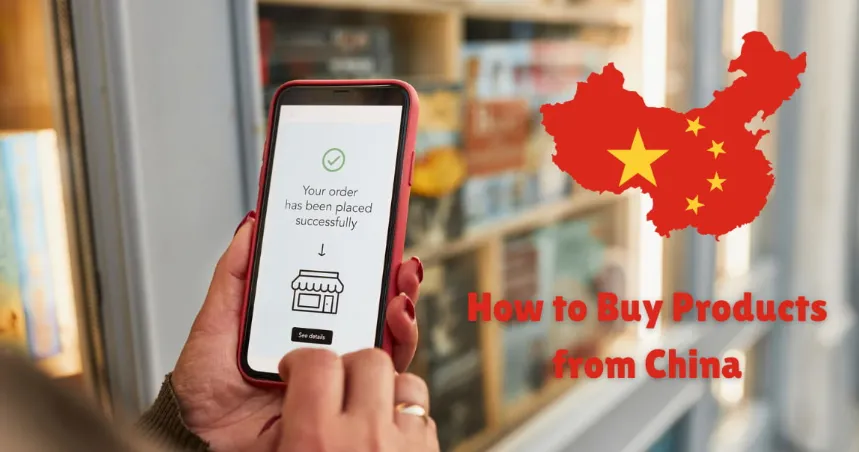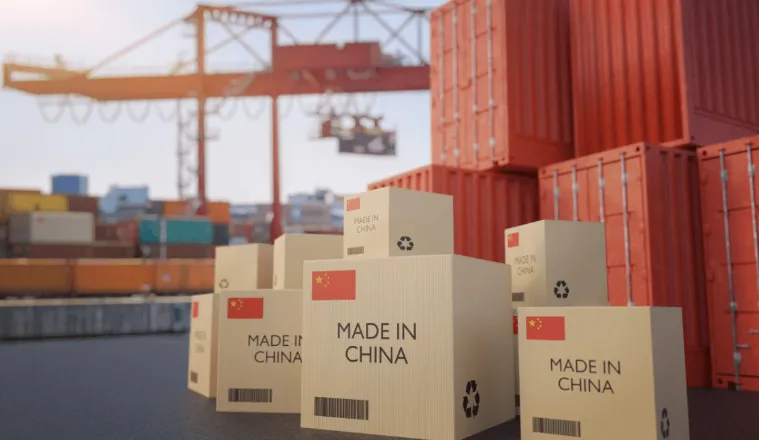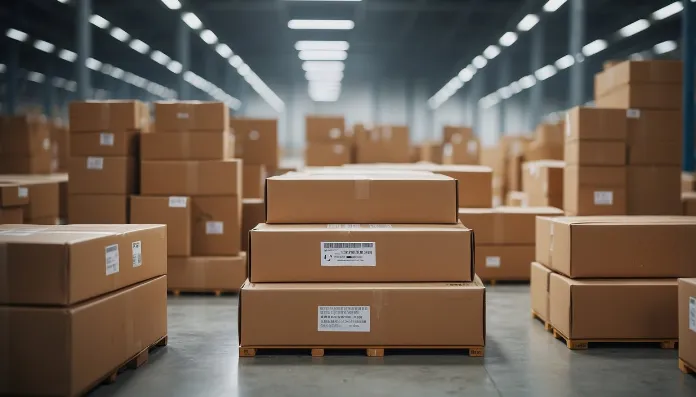How to source cheap products from China — a polished, practical playbook

Thesis: Cheap = total landed cost + managed risk. If you ignore either side, the lowest unit price will cost you more in the long run.
You want low cost, sure. Smart buyers want value: the lowest total cost that keeps customers happy and cash flowing. Chasing the lowest unit price is a common trap — it ignores freight, duty, inspection, returs, and the damage a bad batch does to your brand.
Quick scenario: a $1 part with poor QC and $2.00 per-unit effective shipping often ends up costing more — in money and headaches — than a $3 part with reliable quality and $0.50 shipping. Always run the numbers before you buy.

| Platform / Market | Best for | Key advantage | Main drawback | When to use |
|---|---|---|---|---|
| 1688.com | Buyers who can use Chinese agents or read Chinese | Lowest factory prices; many domestic manufacturers; flexible small batches | Chinese-only, mostly domestic sellers, export logistics harder | Use with a trusted local agent for the cheapest factory buys |
| Alibaba.com | Global importers, first-timers | English UI, Trade Assurance, many exporters | Higher prices vs 1688; many trading companies (middlemen) | Good for sample orders, export-ready suppliers, lower risk |
| Yiwu Market | Small commodity/retail resellers | Huge selection of low-value items, low MOQ | Quality inconsistency, variable compliance | Best for novelty items, retail testers, impulse products |
| Huaqiangbei (Shenzhen) | Electronics components & small consumer electronics | Huge component ecosystem, quick prototyping, bargain components | Authenticity and safety risks | Use for electronics sourcing/prototyping with testing |
| Local factories / trade shows | Buyers who can travel or send agents | Direct factory connections, negotiation leverage | Time & travel cost, misleading showroom samples | Best when scaling and building long-term supplier relationships |
Bottom line: 1688 is the cheapest but needs local support. Alibaba is safer/cleaner for international buyers. Markets like Yiwu/Huaqiangbei are category-specific powerhouses.
Rule: never compare suppliers by unit price alone. You must compute Total Landed Cost (TLC).
TLC formula (spreadsheet-ready)
| SKU | UnitPrice | Qty | UnitPrice_x_Qty | Freight | Insurance | CustomsDuty | VAT | CustomsClearanceFees | PortTerminalCharges | LocalTransport | InspectionCosts | PackagingLabeling | PaymentFees | ReturnsProvision | TotalCost | TLC_per_unit |
| EX-A-001 | 1.00 | 1000.00 | 1000.00 | 600.00 | 10.00 | 120.00 | 150.00 | 80.00 | 0.00 | 40.00 | 120.00 | 50.00 | 10.00 | 100.00 | 2280.00 | 2.28 |
| TEMPLATE | 0.00 | 0.00 | 0.00 | 0.00 | 0.00 | 0.00 | 0.00 | 0.00 | 0.00 | 0.00 | 0.00 | 0.00 | 0.00 | 0.00 | 0.00 | 0.00 |
Unit price (FOB/EXW) — confirm which incoterm is used.
Freight & handling — sea FCL vs LCL vs air vs express; include container run, drayage, terminal handling.
Insurance — usually 0.1–0.5% of cargo value depending on risk.
Customs duty & VAT — depends on HS code; small changes in classification change duty.
Customs clearance & broker fees — documentation, agent fee, possible demurrage.
Local transport — port to warehouse or FBA center.
Inspection & testing — third-party inspection, lab tests for regulated products.
Packaging & labeling — retail-ready costs, inserts, barcode printing.
Payment & FX fees — bank TT fees, currency conversion margins, PayPal fees.
Returns/warranty provision — set aside % of sales for expected returns or replacements.
Time cost / inventory holding — cash tied up during transit and lead time.
Bold warning: If your TLC math is sloppy, your margins lie to you. Build the TLC for each supplier and SKU before you commit.

Unit price = $1.00
Qty = 1,000 → UnitPrice × Qty = $1,000.00
Freight (sea LCL, all-in) = $600.00
Insurance = $10.00
Customs duty = $120.00
VAT = $150.00
Clearance fees = $80.00
Local transport = $40.00
Inspection = $120.00
Packaging = $50.00
Payment fees = $10.00
Returns provision = $100.00
Total cost = add all:
1,000.00 + 600.00 + 10.00 + 120.00 + 150.00 + 80.00 + 40.00 + 120.00 + 50.00 + 10.00 + 100.00 = $2,380.00
TLC per unit = $2,380.00 ÷ 1,000 = $2.38 per unit
Although unit price was $1.00, true cost = $2.38.
Unit price = $3.00
Qty = 1,000 → UnitPrice × Qty = $3,000.00
Freight (consolidated FCL/economy) = $300.00
Insurance = $10.00
Customs duty = $360.00
VAT = $450.00
Clearance fees = $80.00
Local transport = $40.00
Inspection = $50.00
Packaging = $100.00
Payment fees = $12.00
Returns provision = $30.00
Total cost = 3,000.00 + 300.00 + 10.00 + 360.00 + 450.00 + 80.00 + 40.00 + 50.00 + 100.00 + 12.00 + 30.00 = $4,432.00
TLC per unit = $4,432.00 ÷ 1,000 = $4.432 per unit
Here, $3.00 unit => $4.43 landed. Compare A ($2.38) vs B ($4.43) — A is actually cheaper in this scenario. The point: compute the TLC and compare.
Work through stages:filter → qualify → validate → sample → contract.

Alibaba: Filter for Gold Supplier, Trade Assurance, years in business, product reviews, transaction history, and onsite/factory verification badges.
1688: Look for factory (厂) listings, high sales numbers, many product images, and verified business license via agent.
Can you supply a sample? Price and lead time.
MOQ for production and for samples.
Incoterm for quote (EXW, FOB, CIF).
Payment terms (30/70 TT, LC, escrow).
Production lead time and monthly capacity.
HS code and suggested duty rate.
QC procedures and whether they accept third-party inspection.
Factory photos, ISO/CE/UL documentation if applicable.
References or export clients.
Refuses samples or insists on huge MOQ immediately.
Requests untraceable payment methods (Western Union).
Vague about lead times or refuses third-party inspection.
Extremely poor or inconsistent product images.
No verifiable years of operation or suspiciously new supplier claiming huge capacity.
Transparent answers, timely replies, accepts trade assurance/escrow.
Provides HS code, factory photos, and inspection willingness.
Offers a trial/pilot run and clear packaging specs.
Sampling is your cheapest insurance. For cheap SKUs, sampling prevents catastrophic costly recalls or returns.
Get the exact SKU with the precise packaging and labeling you intend to use.
Pay for the sample and express shipping — you want it in-hand, inspected.
Document everything: order number, sample photos, timestamps, batch numbers.
If possible, order samples from multiple suppliers to compare quality.
Functionality and basic stress testing.
Dimensional accuracy and tolerances.
Visual finish: seams, paint, labels.
Packaging strength and retail readiness.
Safety hazards and obvious noncompliance signs.
Ask the supplier for root cause and corrective plan.
Negotiate a second sample after corrections, or a discount/compensation.
If they refuse reasonable correction, walk away — cheap isn’t worth fraud.
Bold tip: Third-party inspection before shipment (pre-shipment inspection) is cheap insurance — typically 0.5–1% of order value but can save 10× that in returns.
Be honest: lower price almost always means trade-offs.
Common trade-offs: less consistent quality, minimal supplier after-sales support, basic packaging, potential longer lead times, higher defect rates.
When trade-offs are acceptable: disposable consumables, low-margin impulse items, testing markets.
When trade-offs are unacceptable: regulated items, electronics with safety concerns, high-brand products.
Rule of thumb: if your business depends on repeat customers and brand value, prioritize QC and compliance over a few percentage points of unit savings.
Compute TLC for every supplier & SKU.
Order samples from the factory (not just trading companies) where possible.
Use escrow/trade assurance for the first 1–2 orders.
Inspect before shipment.
Start with a pilot batch (small volume) before scaling.
Budget a returns/warranty reserve (percentage depends on category).
China is a global hub for low-cost manufacturing, but “cheap” means more than just unit price—it’s about scale, supply chain efficiency, and shipping weight. Below are the categories where buyers consistently find the best savings:
Electronics Accessories: USB cables, LED lights, power banks. (⚠️ Always test quality before bulk orders.)
Fashion Accessories: Jewelry, sunglasses, handbags—lightweight and easy to ship.
Home & Kitchen Goods: Plastic containers, utensils, cleaning tools—produced at massive scale.
Stationery & Office Supplies: Pens, notebooks, school sets—high automation keeps costs down.
Toys & Gifts: Plush toys, puzzles, party favors—low price but check safety compliance.
Textiles: Socks, T-shirts, towels—supported by strong textile hubs.
Promotional Items: Keychains, mugs, tote bags—cheap and customizable.
Key Takeaway: The cheapest products are usually small, light, and mass-produced. Always factor in total landed cost (shipping, duties, quality control) and not just the unit price.
The “best” sourcing website depends on your business needs:
Alibaba.com – Best for international buyers.
English-friendly interface
Wide supplier base (manufacturers + trading companies)
Strong buyer protection and escrow options
Slightly higher prices than local platforms
1688.com – Best for ultra-low domestic prices.
Wholesale marketplace for Chinese buyers
Cheapest product costs (often factory-direct)
Requires Chinese language and payment methods
No built-in international shipping
Made-in-China.com – Professional B2B platform.
Good for industrial and machinery products
Strong supplier verification system
Global Sources – Trusted by experienced importers.
High-quality suppliers, especially electronics
Good for bulk orders and trade shows
The short answer: Not always.
If you buy small quantities (test orders, samples, or bulk via Alibaba/1688), suppliers usually do not require a business license. Many cross-border wholesalers work with individuals or startups without formal registration.
If you plan large-scale or long-term importing, a business license (or company registration in your own country) is strongly recommended.
Customs clearance often requires a registered importer.
Some Chinese suppliers may only work with verified businesses for high-volume orders.
It protects you legally in contracts and payments.
Alternative: Some new importers use freight forwarders or sourcing agents who handle the business license requirement on their side.
Bottom line:
Small trial orders: No license usually needed.
Serious wholesale/importing: Yes, you should have a business license in your country.
Unfortunately, not every “wholesaler” online is legitimate. Many are middlemen or even outright scammers. Here are key ways to identify them:
Ask for their business license or Chinese company registration.
Verify their details on official platforms (e.g., China’s National Enterprise Credit Information Publicity System).
Genuine distributors usually have a professional website, not just a WeChat or Gmail contact.
Red flag: Only accepts risky payment methods like Western Union or MoneyGram. Reliable suppliers usually offer bank transfer, Alibaba Trade Assurance, or PayPal (for samples).
If the price is too good to be true, it probably is.
Compare across multiple suppliers—if one is dramatically lower, it may be counterfeit stock.
A legitimate wholesaler will send samples, even if you need to cover shipping.
Refusal to provide samples = big warning sign.
Check how long they’ve been in business.
On Alibaba/1688, look at years active, transaction volume, and buyer feedback.
Search the company name online with keywords like “scam” or “fraud”.
Bottom Line:
A real wholesaler is transparent, has verifiable credentials, and is willing to provide samples. Scammers rely on urgency, unrealistic prices, and vague communication.
Q1 — Is 1688 safe for foreigners?
Yes, with a Chinese agent or fluent Chinese contact. 1688 is domestic-focused, so exporters are less common. Use a verified agent for payment, translation, and logistics.
Q2 — How to pay safely?
Use bank TT with documented terms, PayPal for small samples, or Trade Assurance / escrow services for first orders. Avoid Western Union or untraceable payments.
Q3 — Cheapest shipping method?
For volume: sea freight FCL is cheapest per unit. For small urgent orders: air/express costs more but is faster. Always compute cost-per-unit for your order size.
Q4 — How much should I allocate for inspection?
Typical 3rd-party inspection costs range $100–$400 depending on location and order complexity; factor it into TLC. For high-risk items, allocate lab test costs as needed.
Q5 — What’s a reasonable returns provision?
Depends on category: electronics 5–10%, textile/apparel 3–6%, simple accessories 1–3%. Start conservative and adjust from real return data.
Q6 — Can I use Alibaba suppliers for Amazon FBA?
Yes — many Alibaba suppliers are export-ready and can prepare FBA-compliant pallets. Confirm packaging, labeling, and prep requirements in advance.
Q7 — How many suppliers should I contact?
Start with 3–7 suppliers per SKU to get a realistic price and quality range. Fewer than three leaves you exposed to price-manipulation.
Q8 — What if a supplier refuses inspection?
Treat refusal as a red flag. Either insist on inspection by a third party or move to another supplier.
Q9 — What paperwork do I need?
At minimum: commercial invoice, packing list, bill of lading/air waybill, certificate of origin (if needed), and product compliance certificates (where required).
Q10 — Should I visit China or hire an agent?
For high-volume or complex sourcing, visiting (or hiring a reliable agent) builds relationships and often saves money. For smaller buyers, a vetted agent is usually the best ROI.
Contact us
Call Us: +86 193 7668 8822
Email:[email protected]
Add: Building B, No.2, He Er Er Road, Dawangshan Community, Shajing Street, Bao'an District, Shenzhen, China